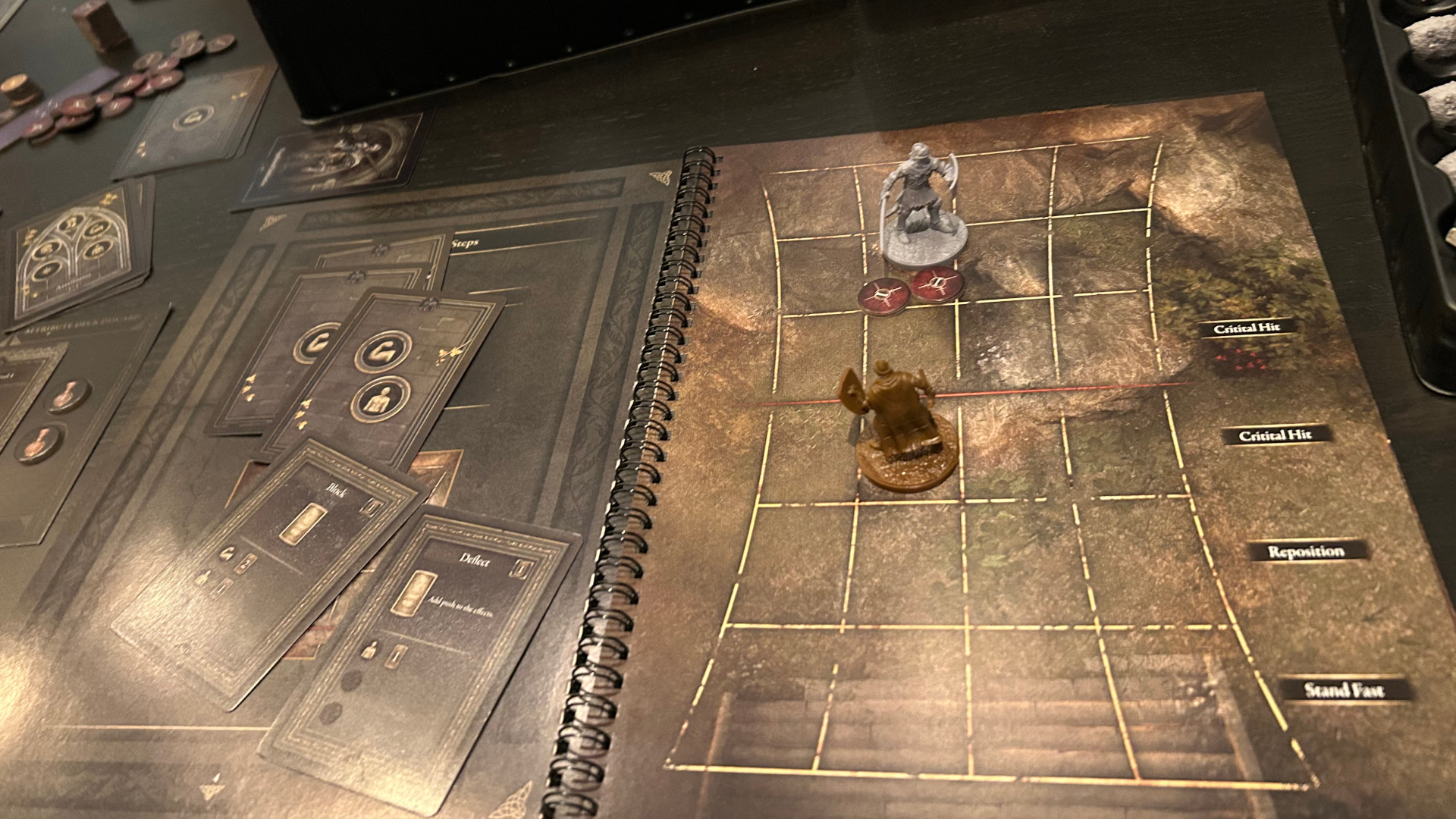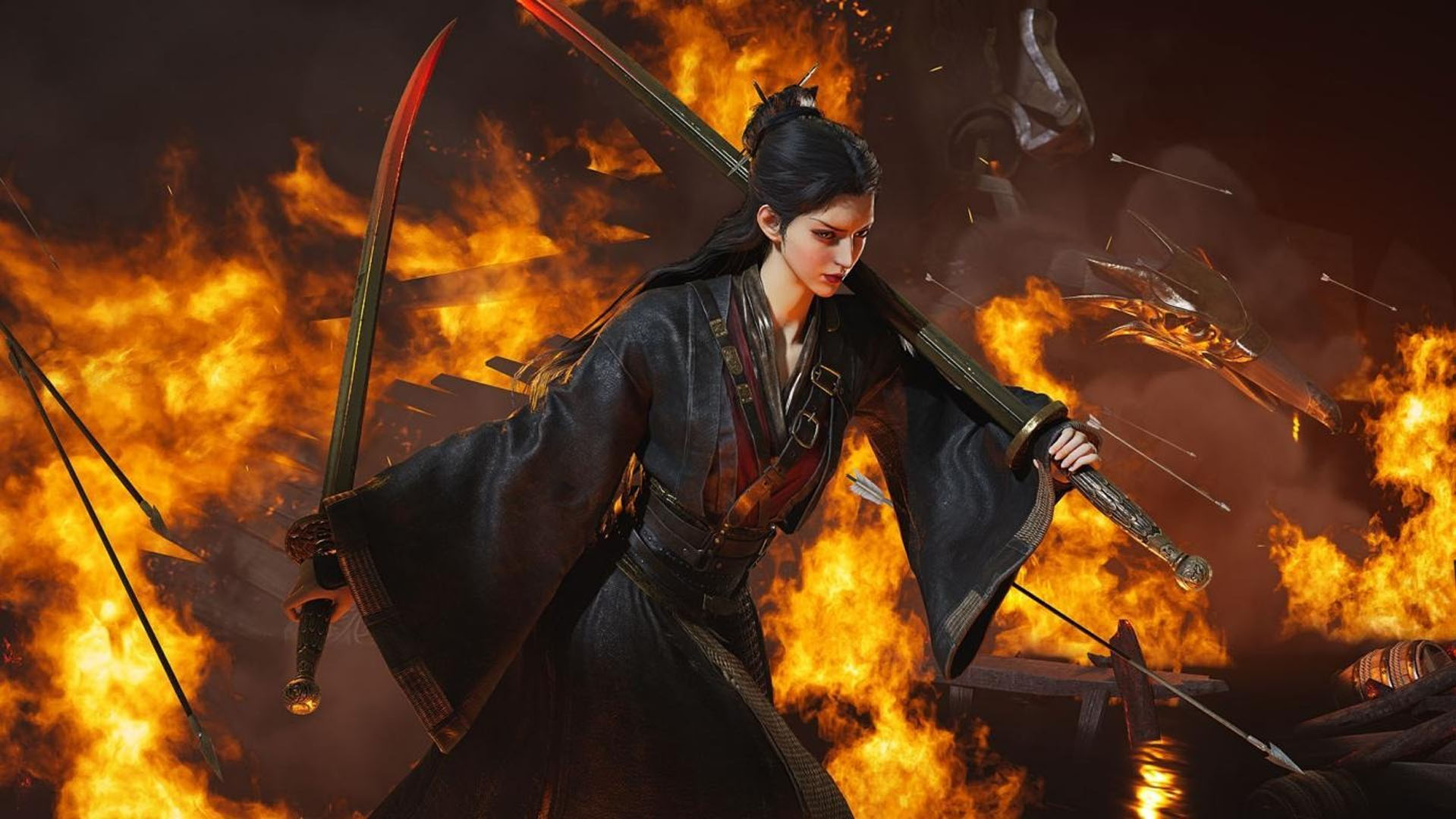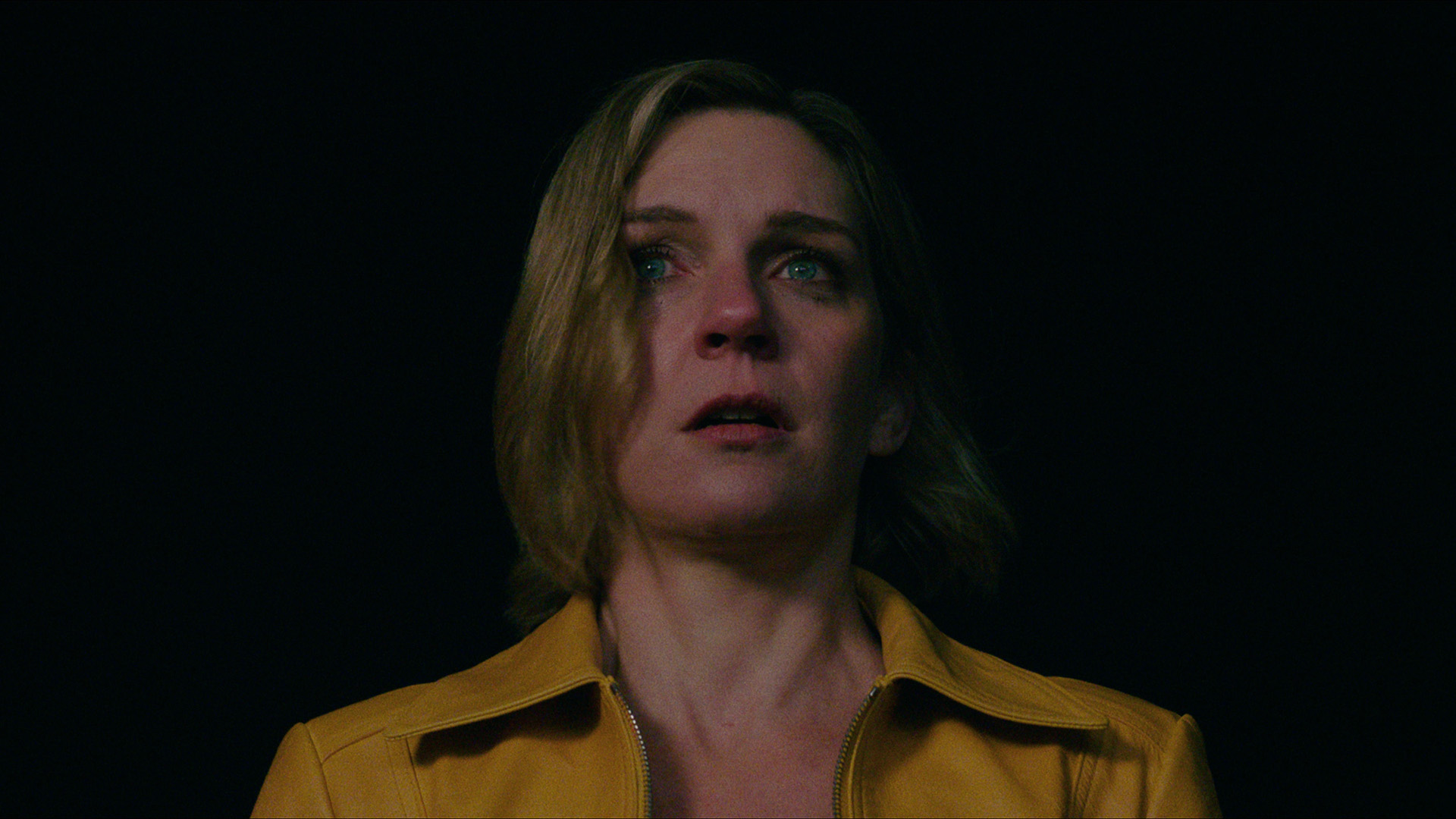GamesRadar+ Verdict
Elden Ring: Realm of the Grafted King tries to offer the video game’s mix of wondrous exploration, tough fights and mysterious narrative, but largely falls flat. Inconsistent quality in the physical materials mixed with a repetitive gameplay loop made my group get tired of playing long before the campaign was over.
Pros
- +
Minis look very cool
- +
Deckbuilding aspects give a feeling of progress after every scenario
Cons
- -
Rulebook is poorly written and falls apart quickly
- -
Gameplay gets repetitive
- -
Unclear symbols and tiny text makes it hard to read cards and the board
- -
Combat is very swingy
Why you can trust GamesRadar+
I am never going to play FromSoftware’s five-star Elden Ring because I simply don’t have the patience, time or dexterity needed to master the fights, and that’s why I was excited about the chance to try Steamforged Games’ Elden Ring: The Board Game – Realm of the Grafted King. I was hoping that it might give me at least a taste of the video game masterpiece.
Unfortunately, it proved to be a disappointing experience for me and the Elden Ring players I shared it with. Elden Ring: The Board Game – Realm of the Grafted King may look the part, but it's unlikely to earn a spot on lists of the best board games.
Elden Ring: The Board Game - Realm of the Grafted King features & design
Price | $199.99 / £199.99 |
Ages | 14+ |
Game type | Dungeon-crawler / cooperative |
Players | 1 - 4 |
Lasts | 2hrs+ |
Complexity | High |
Designers | In-house |
Publisher | Steamforged Games |
Play if you enjoy | Elden Ring, Dark Souls: The Board Game, Monster Hunter: World: The Board Game |
- Level up your weapon and attribute decks
- Great-looking, imposing miniatures
- Rulebook quickly fell apart
Elden Ring: The Board Game - Realm of the Grafted King is one of three huge standalone games that can also be joined together for a longer campaign, and it takes us to the forests of Limgrave for 30 replayable scenarios. Characters grow more powerful over time as they unlock better equipment, discover new crafting recipes, and improve their attributes. The larger campaign is divided into numerous bite-sized scenarios where players battle bosses, fight waves of enemies, make decisions in choose-your-own adventure-style narrative sequences, and explore the world by flipping over tiles.
One to four players share the adventure as Tarnished with different specialties, with the tough Vagabond protecting the team while the Prophet provides healing and the Samurai moves around the board to engage with enemies and avoid attacks. Their combat prowess is represented by building a pair of decks, one representing their weapons and one tied to their attributes. When they take an action in a fight, they choose a card from their hand for a power or basic attack and then randomly reveal an attribute card to determine how powerful the effect is. Each scenario awards players with runes they can spend to upgrade their equipment — unlocking more powerful attack cards — and buy improved attribute cards. This creates a satisfying feeling of progress after every session.
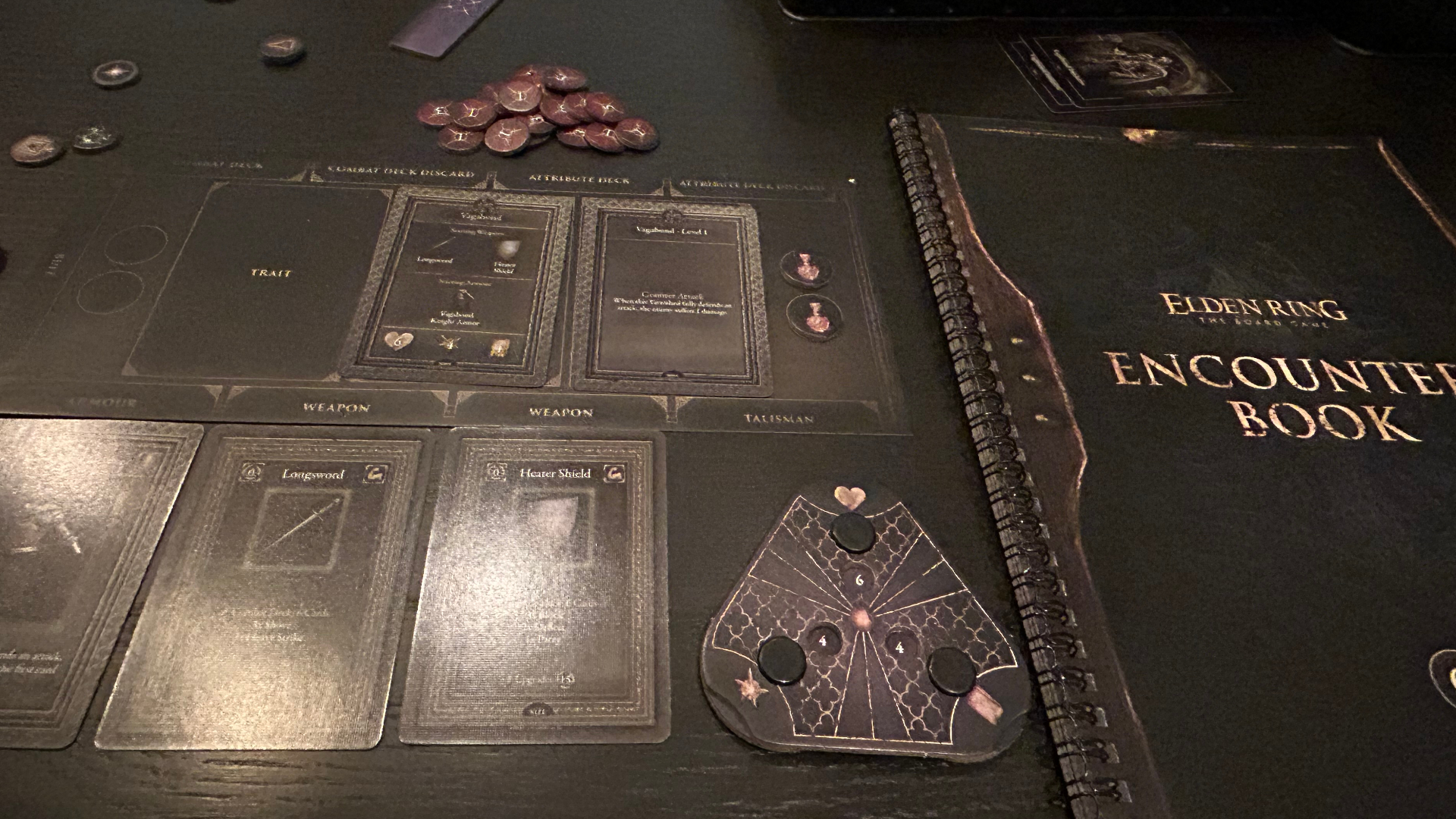
While the miniatures representing the game’s many types of foes look great, the other components leave a lot to be desired. Although it could obviously have been an one-off with my review copy, the binding on my rulebook started falling apart during our first session as we flipped back and forth trying to make sense of some of the more confusing rules. The game is complex, and player aids would have been greatly appreciated to provide reminders during combat and exploration. There also weren’t enough cards representing runes, which made it hard to keep track of how many you had if you wanted to save some between scenarios or cash out some of your cards for a big upgrade.
The color scheme is mostly gray, dark green, and brown, which isn’t very visually interesting and makes it hard to determine which symbols are shown on a tile you’re exploring since most of them look pretty similar. One of the worst offenders is flasks used to heal and refresh your focus points. They’re mostly gold with just a tiny splash of green or red, meaning you have to squint to check which is which.
The text on cards is also too small.
Weekly digests, tales from the communities you love, and more
Gameplay

- Tactical grid fights
- Gather resources by flipping tiles
- Quests and narrative don’t do enough
The Elden Ring video game lets players explore a big, open world, and different areas are represented in the board game by stacks of tiles that are revealed as your character moves. These can have resources you're able to pick up, hardships you need to bypass to advance, or foes that are fought by moving your character to a battle that takes place on a grid in an encounter book. During boss fights, several of the books are lined up to produce a larger field of battle.
Initiative is one of the most important parts of a fight, with cards representing the players and their foes shuffled together and then dealt out to determine the turn order. Enemy attacks can be devastating, so when possible you want to make sure that they hit a character with a strong defense or that you can position yourselves so that the enemies don’t have a valid target. Some abilities also can stagger opponents, making them skip their turn.
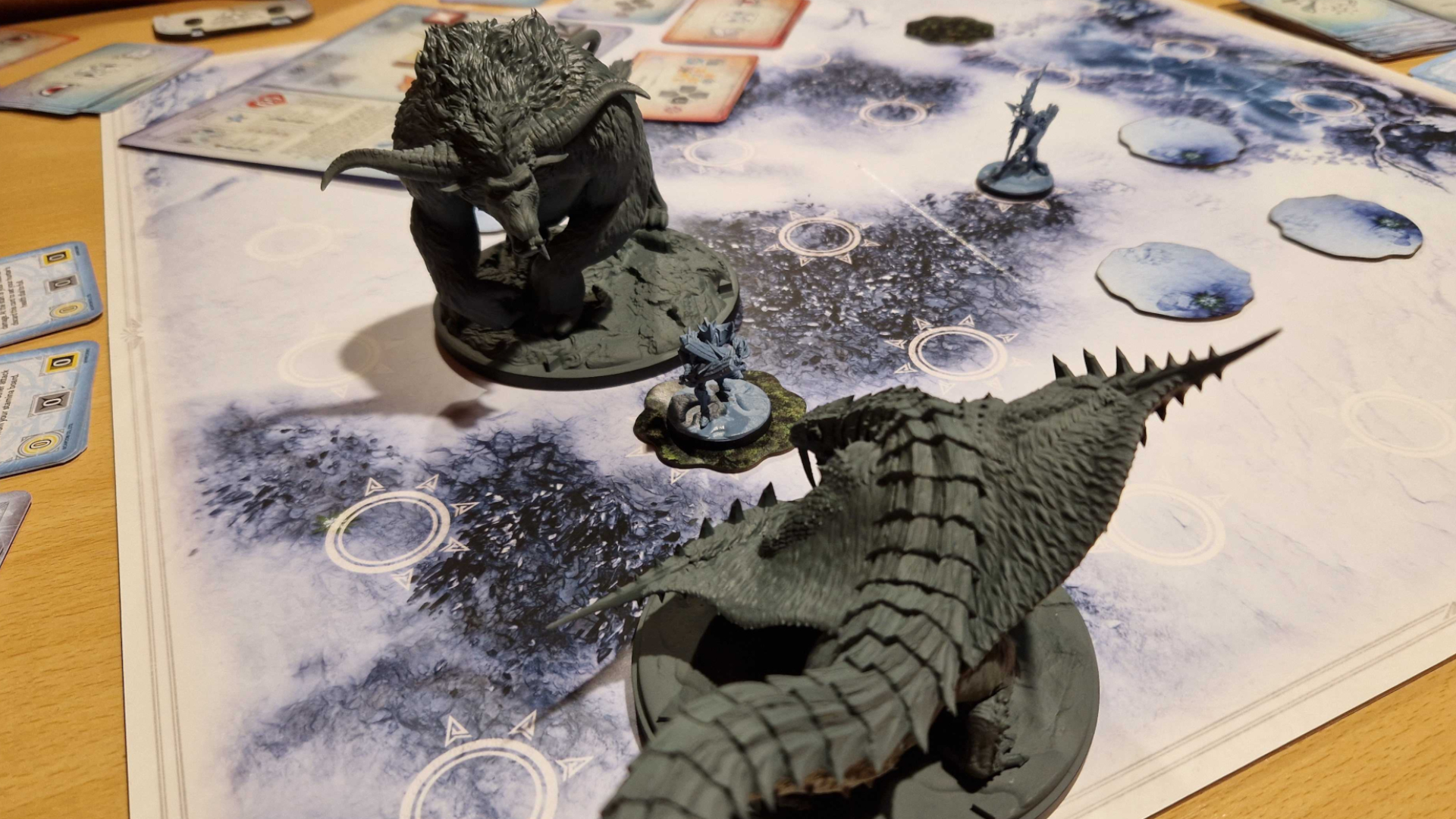
Got a taste for video game adaptations? Steamforged also produces Dark Souls: The Board Game, but we'd point you toward the excellent Monster Hunter World: The Board Game - Wildspire Waste or Horizon Zero Dawn: The Board Game.
Characters positioned in the middle of the grid have a limited ability to manipulate the initiative order so that’s probably where you’re going to live if you’re playing solo or prefer a cautious strategy. The back row makes your character more defensive, while the front makes it easier for them to unleash a devastating attack. Moving between requires balancing risk and rewards and understanding your class role.
While boss battles involve everyone, each fight in the more common exploration scenarios has a set number of initiative cards that can be involved, representing the number of players and summoned creatures. It works well for scaling if someone in a multiplayer game misses a session, but it’s a bit awkward when two players are taking their turns on the more complex combat and the others are just wandering around picking up herbs.
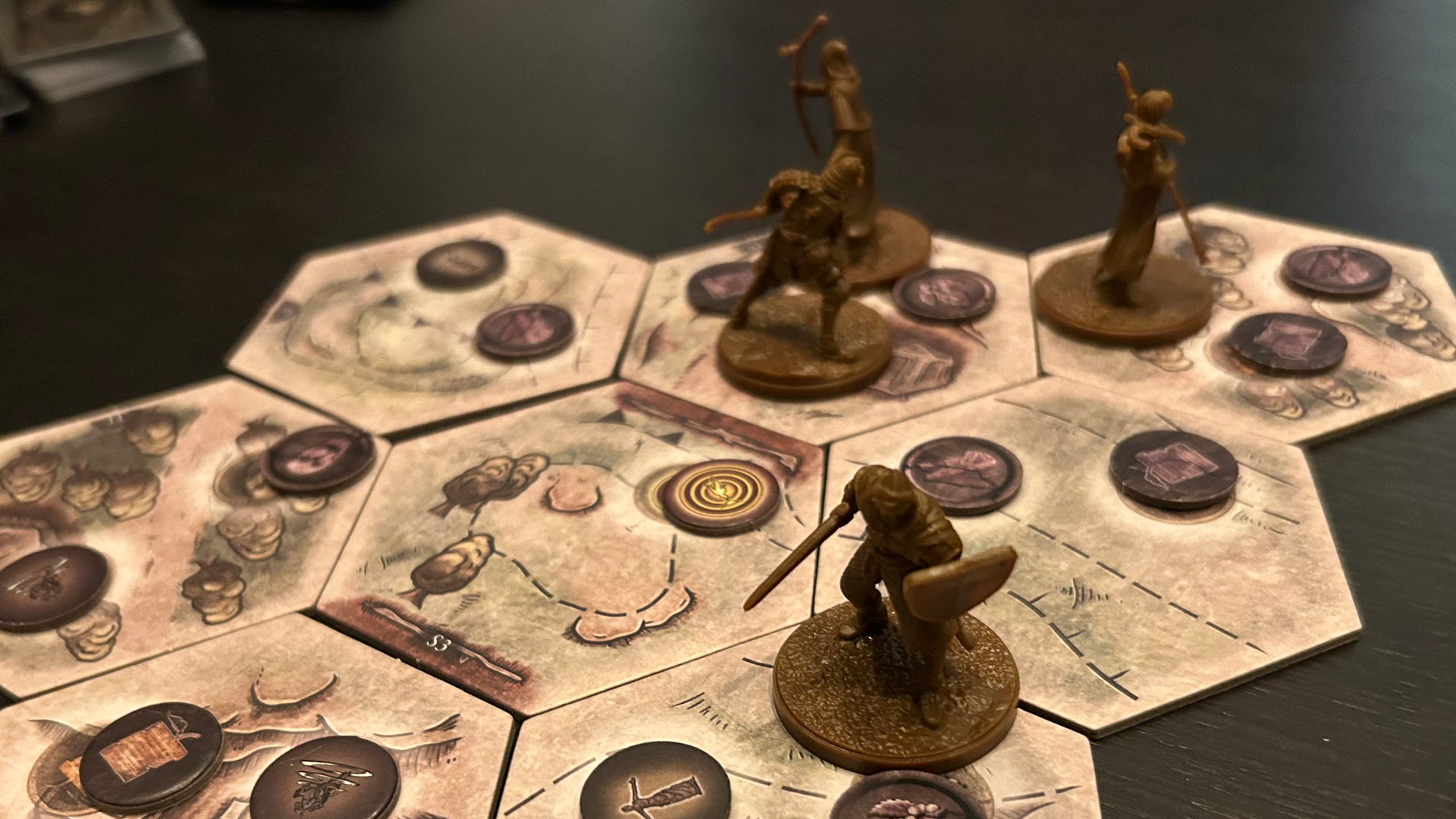
This division would feel better if the game had more of a time crunch that encouraged players to split their focus. Instead Elden Ring rewards grinding by exploring every tile and using a Site of Grace to refresh material nodes and gather more. Time is tracked by a weather deck that occasionally prompts players to draw challenging events but mostly does nothing.
Narrative chapters are underwhelming too, just boiling down to reading blocks of text and making some decisions on how you approach things that can cause you to lose health or maybe gain a good card that could come up in a future scenario. Each class has a series of quests they move through by performing certain activities in the course of normal gameplay like overcoming hardships or attacking enemies, but most of the time completing a quest just leads to picking up a new quest without even a tiny intermediate reward. The tasks also aren’t created equal between classes which meant that my Vanguard hadn’t even completed the first quest by the time the Samurai had finished five and unlocked a new weapon.
Should you buy Elden Ring: The Board Game - Realm of the Grafted King?
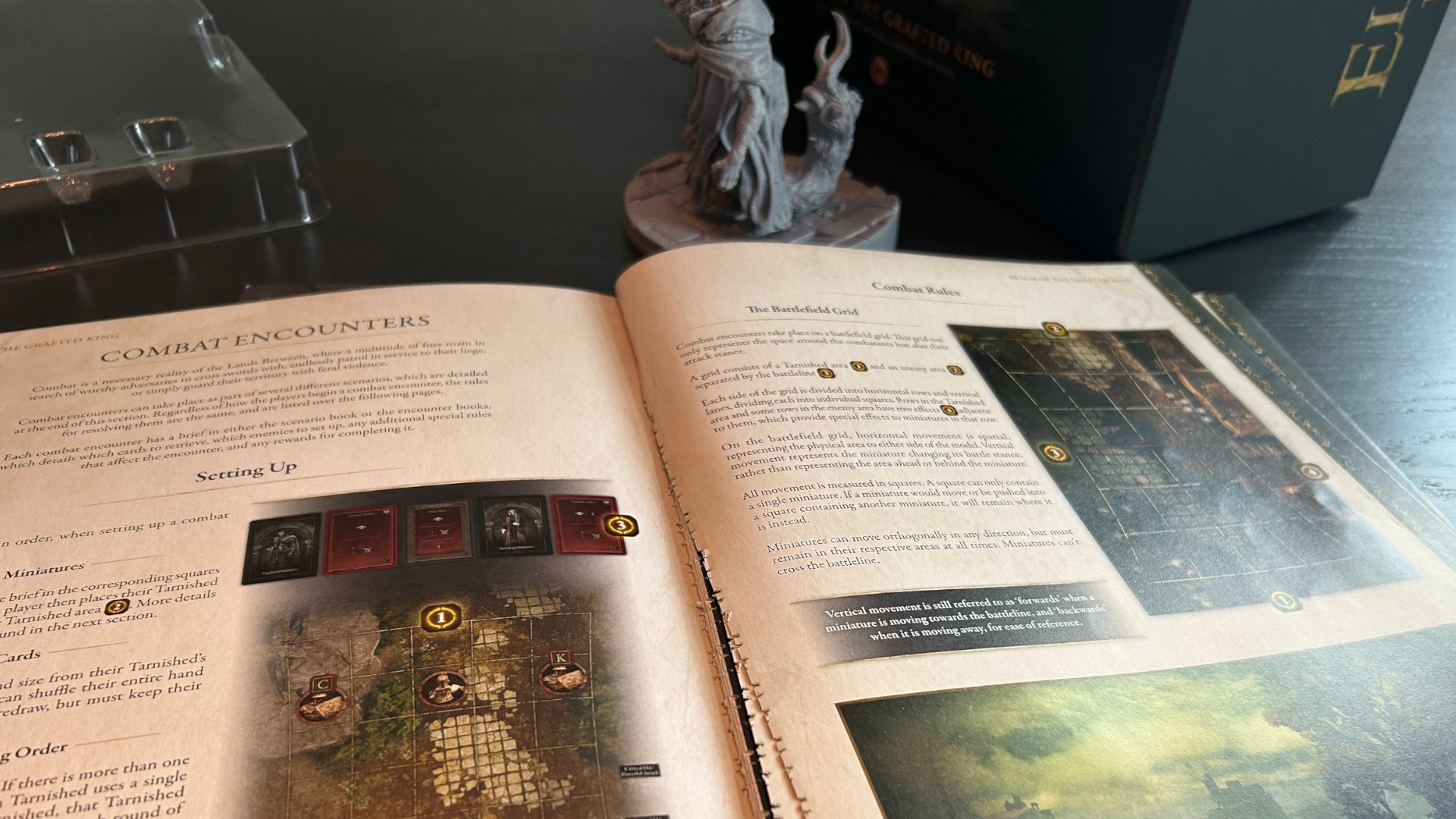
I certainly don’t think Elden Ring: The Board Game – Realm of the Grafted King is worth its very high price tag, and everyone I’ve played it with — from fans of the video game to general dungeon-crawling enthusiasts — agreed. While the game offers many scenarios to play through with impressive bosses you’ll want to tailor your deck to face, the overall gameplay quickly grew tedious.
I wanted a new cooperative game to challenge my friends, but Elden Ring’s shoddy components, unimpressive narrative, and bland challenges has left us continuing our search. If you’re a board game player, I’d recommend you pick up the Descent series or Gloomhaven instead. If you’re a big Elden Ring fan, you’re better off just grabbing Nightreign.
Ratings
Criteria | Notes | Score |
|---|---|---|
Game mechanics | Combat can be fun, but the narrative and exploration sections are bland. | 3/5 |
Accessibility | The rules are dense and not particularly well explained. Player aid cards would have been very helpful. | 2/5 |
Replayability | The game has a huge number of scenarios so you can easily devote dozens of hours to it if you don’t run out of patience first. | 3/5 |
Setup and pack-down | The box is decently organized with different decks and the tiles and encounter books make it easy to set up. | 4/5 |
Component quality | While the miniatures look good, the rulebook quickly fell apart, the text is too small on cards, and the limited color scheme makes many components look too much alike. | 2/5 |
Buy it if...
✅ You absolutely love Elden Ring
Devoted FromSoft fans who need more Elden Ring can find a new spin on their favorite title here.
✅ You like leveling up your character
Rewards after each scenario can make updating your character deck satisfying, particularly when you see the benefits in the next fight.
Don't buy it if...
❌ You’re looking for a lot of variety
While there are a lot of scenarios in Elden Ring, it quickly feels repetitive.
❌ Visuals are important to you
The miniatures might look good, but the bland color pallet makes this a dull world to explore.
How we tested Elden Ring: The Board Game - Realm of the Grafted King
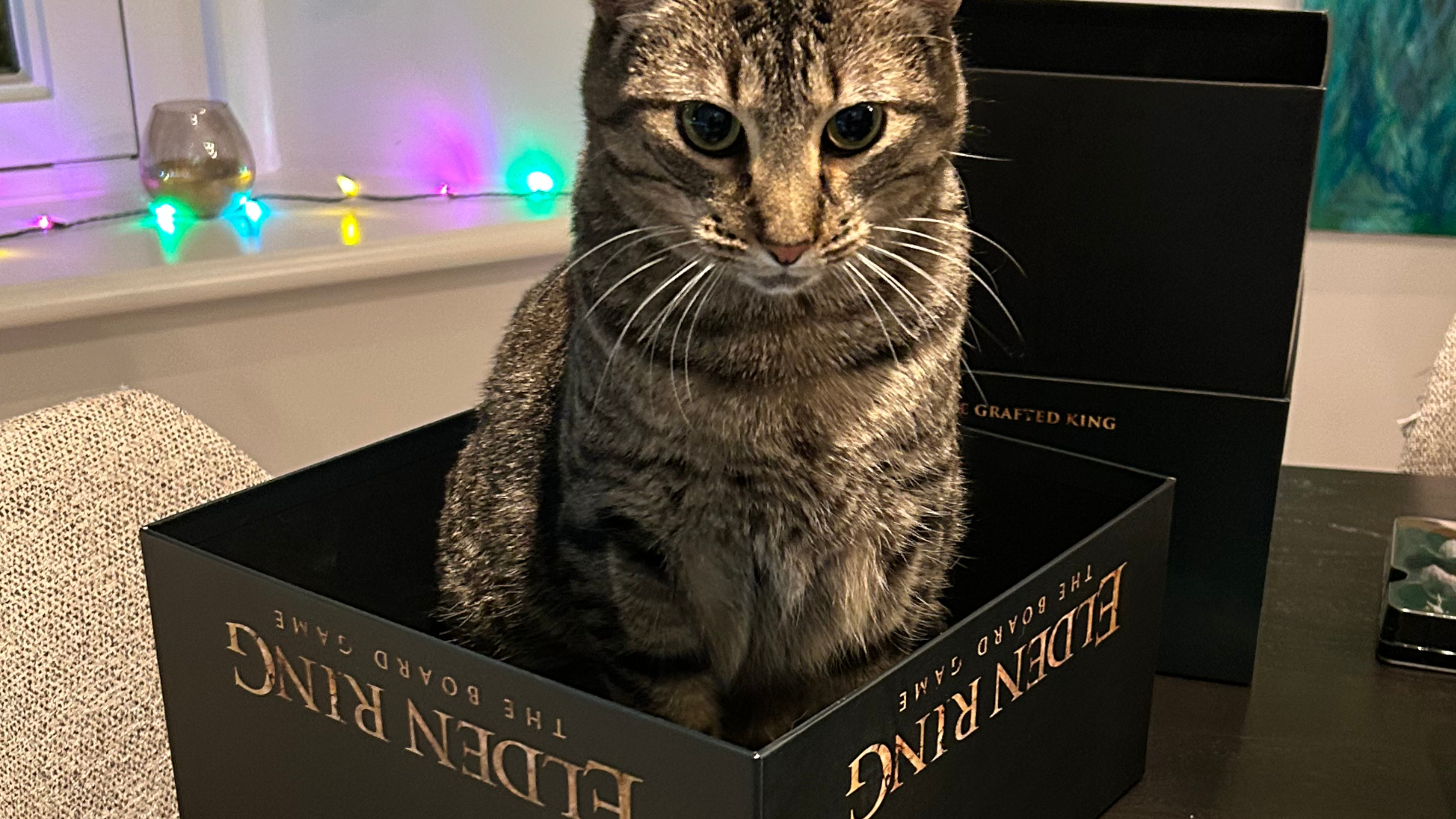
This review was conducted using a sample provided by the publisher.
Our reviewer played this game over multiple sessions with a variety of people that included board game regulars and Elden Ring fans to provide a broader overview of how the system works, along with how it'd be received by different audiences. Samantha has been writing about tabletop games for more than a decade, so has plenty of examples to compare this against.
To find out more, see this guide to how we test board games or check the complete GamesRadar+ reviews policy.
Want something else to try? Be sure to check out the best 2-player board games, or the best adult board games.

Samantha is a freelance writer that specializes in tabletop gaming. Her credits include Dicebreaker, IGN, Polygon, and The A.V. Club.
You must confirm your public display name before commenting
Please logout and then login again, you will then be prompted to enter your display name.
